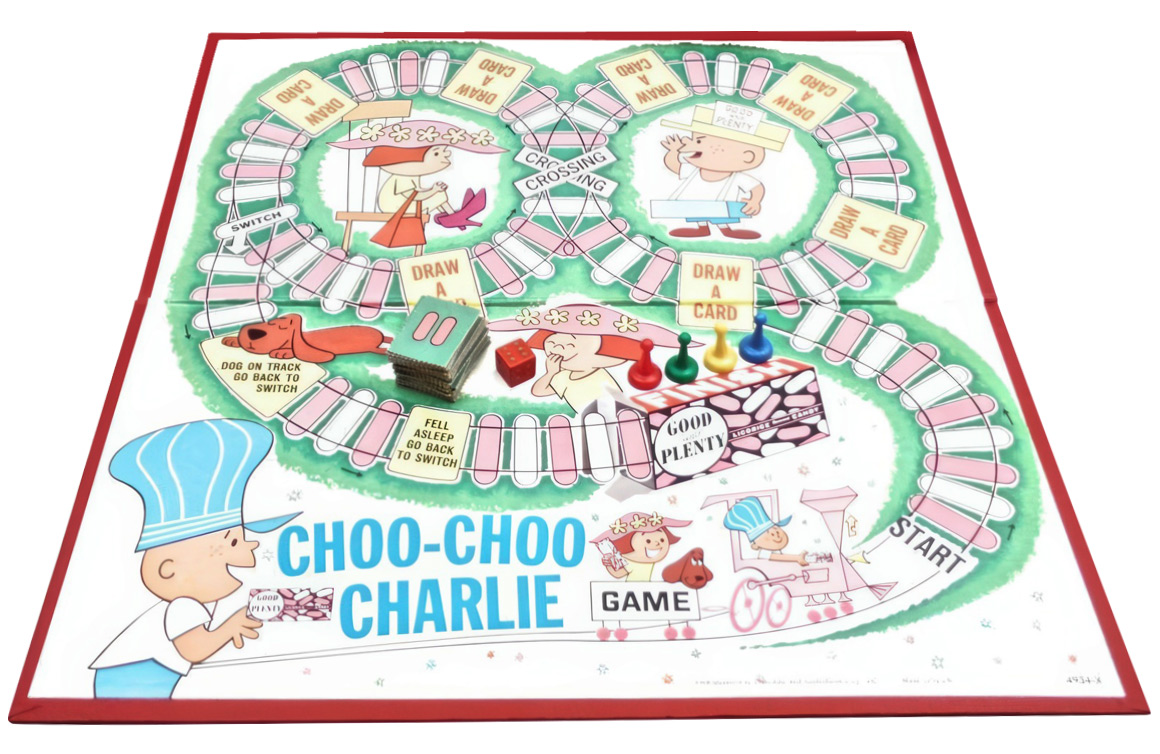“Once upon a time there was an engineer…”
Released in 1968 from Milton Bradley, the Choo-Choo Charlie board game was a brand extension of Good & Plenty candy. The game board was illustrated with the brand’s mascot, Choo-Choo Charlie, along with his train and two companions. The game challenged players to be the first to reach the box of candy at the end of the track.
Good & Plenty was created by the Quaker City Chocolate and Confectionery Company in 1893. The sweet is made of licorice cylinders coated in a pink and white candy shell. Hershey purchased the Good & Plenty brand in 1996 and still produces the confectionery today.
GAMEPLAY
The goal of the roll-and-move game was to be the first player to traverse the entire track and make it to the finish line — illustrated as a box of Good & Plenty candy — with three cards collected on the journey.
There were three types of cards: those marked with either a pink or white piece of candy and those marked “Good and Plenty”. Players needed to collect three cards of a kind before making their way to the finish line. The Good and Plenty cards acted as wildcards, giving the holder(s) an advantage.
Players rolled the single dice and moved their pawn along the tracks. The pink and white candy railway ties offered no particular risk or advantage to players. The yellow squares in the first portion of the game allowed a player to choose a card, adding to add to their collection. In the homestretch of the game were two yellow squares — “dog on track” and “fell asleep” — that penalized players by making them regress down the board.
The first player to arrive at the Good & Plenty candy box with three cards of a kind won the game.
IN THE BOX
A complete game included a game board, four pawns, candy cards, and one dice. Instructions were printed on the platform inside the box.
COLLECTOR CONSIDERATIONS
While Milton Bradley published a variety of board games that featured familiar entertainment properties such as I Dream of Jeannie (1965) and M*A*S*H (1981), Choo-Choo Charlie was one of the few classic board games that tied so closely to a consumer packaged good. Another example of a vintage game tied to a food brand was the game Hawaiian Punch from Mattel (1978).
Note: If you buy something using the eBay link in this story, we may earn a small commission. Thank you for supporting independent toy journalism!

